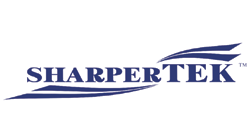How to Extend Ultrasonic Cleaning Solution Performance

Few will argue that ultrasonic cleaners do a fantastic job of removing a host of contaminants from a host of surfaces. While not suitable for every cleaning job, an ultrasonic cleaner is generally recognized as saving time, increasing throughput and providing a clean surface for subsequent operations ranging from surgical suites to machine shops.
Where does the “Dirt” Go?
Ultrasonic cleaners use the power of cavitation – the implosion of billions of microscopic bubbles – to blast away contaminants from surfaces of all types. Unlike the dishwasher or clothes washer where dirt goes down the drain, contaminants removed in an ultrasonic cleaning solution remain in the cleaning solution.
The length of contaminant “residency” in the cleaning solution determines the efficacy of the cleaning solution for subsequent cleaning cycles. Look at it this way: you would not put a new load of dirty laundry in your Maytag full of water used in last week’s batch.
Cleaning solution maintenance is governed by what’s being cleaned.
This analogy doesn’t really work but we hope you get the point. Cleaning solution maintenance comes into play and here you can help.
Where the dirt goes depends a great deal on the type of cleaning solution used. Cleaning solution formulation is usually selected based on the job being performed.
Ultrasonic Cleaning Solution Formulations
For example, when removing greases and oils from parts, a cleaning solution can be characterized as emulsifying, where oils remain suspended, and demulsifying where they rise to the surface.
Low-volume, low-throughput operations suggest an emulsifying cleaner. Ask us about elma clean 210. These types of formulations require close observation because accumulated contaminants inhibit ultrasonic cleaning efficiency and should be replaced frequently. That’s because contaminants remain in suspension and will adhere to the finished product when removed from the bath. This may require a post-cleaning rinse.
High-volume, high-throughput cleaning of oil-contaminated pieces should be cleaned with a demulsifying cleaner such as Elma tech clean A4 where oils rise to the surface and can be skimmed off to extend the solution’s useful life. Ask us for information on industrial ultrasonic cleaners with a skimming ledge to channel contaminants into a holding tank for proper disposal. If an emulsifying cleaning solution is used in industrial-sized units an option is to connect an oil separator to the equipment. The solution is circulated through the separator where suspended oil is removed and the treated solution returned.
Extend ultrasonic cleaning solution life with filters. These can quickly pay for themselves when used on large capacity units. The best are dual-filter systems that first remove particles that cause wear on the pump while the second removes smaller contaminants. Filter replacement time is signaled by a pressure gauge.
Regardless of how you extend the life of your ultrasonic cleaning solution you must include tank cleaning as part of the maintenance procedure. Follow the user manual.







